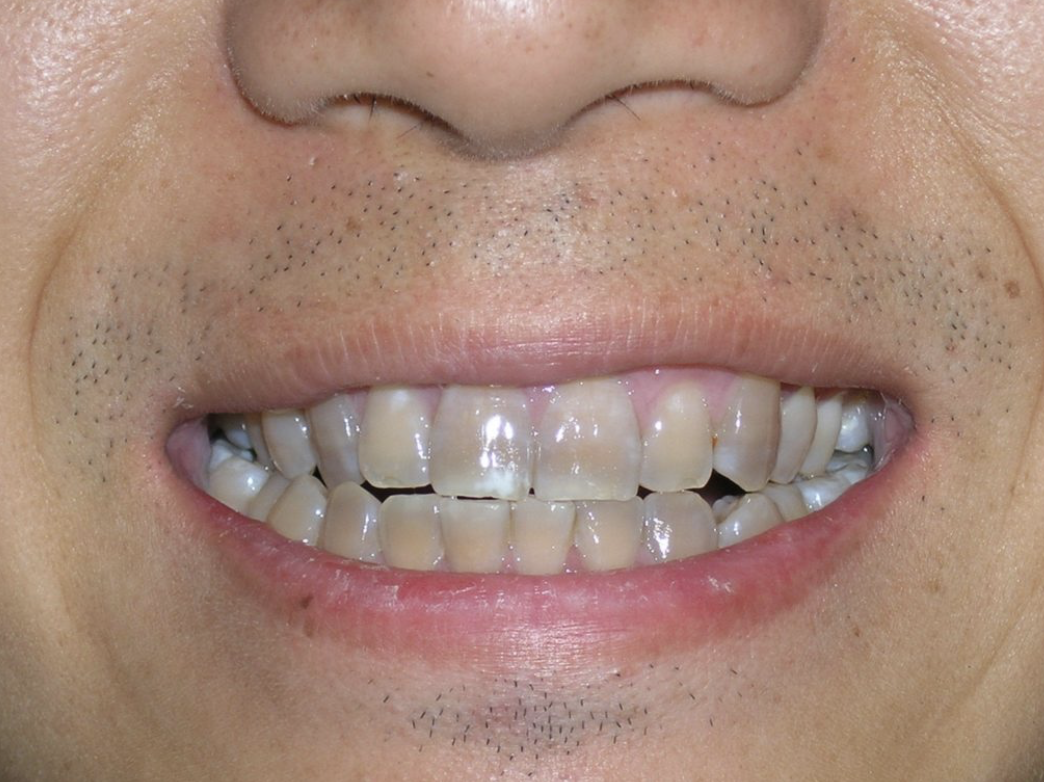A Pharmacist's Fact Versus Fiction: Antibiotic Edition - Part 2
Steph’s Note: Dr. Joe Nissan is here with Part 2 of his myth busting series! In Part I of this series, we went over cefdinir use for uncomplicated cystitis, Bactrim’s Streptococcal coverage, aminopenicillins use for VRE urinary tract infections, intravaginal metronidazole use for trichomoniasis, and beta-lactam cross-reactivity.
Phew. It was a lot of information to throw at you. But strap in your seatbelts because we have even more myths to debunk in Part 2 of this series.
Ready? Let’s dig right in.
Fact or Fiction #1: An increase in serum creatinine while on Bactrim always signifies an acute kidney injury.
Admit it. We all try to avoid Bactrim when able. It has fairly high resistance rates (thanks to overuse in the last 20 years), a nastier side effect profile compared to other antibiotics, can cause hyperkalemia, life-threatening skin rashes (aka SJS/TEN), and it’s nephrotoxic.
About that last point. Nephrotoxicity. Bactrim can cause renal injury, right?
Yes, it most definitely can. BUT I want you to be very careful with that knowledge. If you see an elevated serum creatinine after Bactrim initiation, don’t always freak out. Remember, always assess the patient, not the lab value. Why do I say that?
First, let’s step back and review. As you likely already know, Bactrim is composed of two agents: sulfamethoxazole and trimethoprim. The trimethoprim portion is our focus today. Why? Because trimethoprim decreases tubular secretion of creatinine, causing elevations in serum creatinine concentrations. However, this change in serum creatinine has NOT always been shown to result in a decreased glomerular filtration rate.
So while the elevated serum creatinine may look like the patient has an acute kidney injury (AKI), the kidney may be working just fine.
Pharmacists during rounds when they see a bump in creatinine. (Image)
We pharmacists love to sit behind a computer screen and stare at that serum creatinine to assess renal function. We see a little jump in serum creatinine and get all eager to let the provider know that our patient is trending toward an AKI. Well, folks, I am here to change your practice. Next time you see an elevated serum creatinine on a new-start Bactrim patient, I want you to take a step back and fight the urge to scream out, “It must be an AKI!”.
Now I’m not saying that Bactrim never causes renal injury. Because it can. But it’s very important to look at the patient as a whole. We assess patients, not lab values. We already know the trimethoprim portion of Bactrim is going to decrease creatinine excretion. As a result, we will almost always see an acute rise in serum creatinine after Bactrim initiation. Don’t be shocked by that.
But again, assess the patient, not the lab value. Does our patient have decreased urine output? Are there clear signs of fluid overload? Are there electrolyte abnormalities indicating renal dysfunction? Does the patient have elevated blood pressure? Those are all clinical signs of an AKI.
If my patient has a slight bump in serum creatinine but no other obvious signs of renal injury, then who cares? The serum creatinine will normalize once Bactrim therapy is complete. We don’t need to stop Bactrim right away just because the serum creatinine went up a little bit. Again, we should expect it to.
tl;dr Summary: Trimethoprim decreases tubular secretion of creatinine, causing elevations in serum creatinine concentrations. However, this change in serum creatinine has NOT always been shown to result in a decreased glomerular filtration rate. An acute kidney injury can only be ruled in if a patient has other signs and symptoms of renal injury, such as decreased urine output, electrolyte abnormalities, edema, and elevated blood pressure.
Fact or Fiction #2: Lactated Ringer’s increases serum lactate levels and should NOT be used in septic patients.
One-hour sepsis bundle. Go.
Measure lactate level.
Obtain blood cultures before administering antibiotics.
Administer broad-spectrum antibiotics.
Begin rapid administration of 30 mL/kg crystalloid for hypotension or lactate ≥4 mmol/L.
Apply vasopressors if hypotensive during or after fluid resuscitation to maintain a MAP ≥65 mmHg.
You’re welcome for that little review. But, let’s focus on step 1 and step 4 because this is where this myth lies. For starters, what is lactate, and why do we measure it?
Well, lactic acid (lactate) is a byproduct that is released when our tissues undergo anaerobic metabolism. It helps us dictate the severity of septic shock. If lactate is elevated, then it’s clear that we are not oxygenating our tissues appropriately (aka shock). Hence, we are forcing our organs to undergo anaerobic metabolism leading to increased serum lactate. To decrease lactate, we need to oxygenate our tissues appropriately so that our organs can go back to aerobic metabolism. How do we do that in sepsis?
Step 4 of the one-hour sepsis bundle. Administering crystalloid fluids to replenish blood volume and increase our mean arterial pressure so that we can provide adequate blood supply (and oxygen) to our tissues. If too much lactate accumulates, we can develop a form of metabolic acidosis known as lactic acidosis. And we don’t want that.
Ok now back to step 4. Administer 30 mL/kg of crystalloid fluid for hypotension or lactate ≥4 mmol/L. What are our common crystalloid fluids?
Normal saline, lactated Ringer’s, and dextrose.
Wait a second. Did you say LACTATED Ringer’s? As in the same lactate that we measure in sepsis? And didn’t you say that too much lactate can lead to acidosis? Surely, we should avoid lactated Ringer’s then, right? WRONG.
Joe during rounds when the provider says they need to avoid lactated Ringer's in sepsis. (Image)
Ugh, this fake news always makes me lose my marbles. I can’t stand when providers avoid lactated Ringer’s for fluid resuscitation in sepsis because they don’t want to increase serum lactate level. Folks, this is FAKE NEWS.
Lactated Ringer’s has sodium lactate, NOT lactic acid. This is a completely different product and has absolutely no effect on our serum lactate levels. So please, educate our providers. Lactated Ringer’s is always an option for crystalloid fluid resuscitation in septic shock patients. It has NO effect on serum lactate levels, and no, it will never worsen lactic acidosis.
tl;dr Summary: Lactated Ringer’s does NOT have lactic acid and can safely be used for fluid resuscitation in septic shock.
Fact or Fiction #3: Avoid nitrofurantoin in patients with a CrCl <60 mL/min.
You may already be comfortable with this topic, but here’s a quick refresher in case you’re not. To get started, take an unopened bottle of nitrofurantoin and peel off that package insert. Go ahead and open that bad boy up. Keep skimming the package insert until you get to the section titled “CONTRAINDICATIONS.”
If you followed my directions correctly, the first thing you’ll read is, “Anuria, oliguria, or significant impairment of renal function (creatinine clearance under 60 mL/min or clinically significant elevated serum creatinine) are contraindications.”
Contraindicated in patients with a CrCl <60 mL/min? Really? That’s like half my patients with urinary tract infections (UTI). But is it true? I mean, this is a myth debunking series. No rocket science or anything, but obviously we’re about to debunk this myth. So no, it’s 100% not true.
There is tons of primary literature that proves nitrofurantoin’s safety and efficacy for the treatment of uncomplicated cystitis in patients with a CrCl between 30 and 60 mL/min. The first study to highlight is a 2017 retrospective review completed by Cunha et al that assessed the safety and efficacy of nitrofurantoin in the treatment of acute uncomplicated cystitis in patients with renal insufficiency. Their findings showed that nitrofurantoin was highly effective in nearly all patients with a CrCl between 30-60 mL/min, and it only failed in two patients due to renal insufficiency (CrCl <30 mL/min).
Another literature review was published in 2013 by Oplinger et al to investigate the evidence leading to nitrofurantoin contraindication in patients with a CrCl below 60 mL/min. The authors concluded that data supporting the contraindication of nitrofurantoin for patients with a CrCl <60 mL/min are nonexistent. Therefore, the authors concluded that the limited data available would support considering using this drug in patients with a CrCl of 40 mL/min or higher.
If that’s not enough evidence to convince you take a look at this study or even this one. Over and over again, you’ll notice a common trend that shows nitrofurantoin can safely be used in patients with a CrCl <60 mL/min. Does that mean we should use nitrofurantoin in all levels of renal insufficiency, including end-stage renal disease (ESRD)?
Definitely not. Given the current literature, we can safely initiate nitrofurantoin in patients with a CrCl 30 to <60 mL/min. However, nitrofurantoin should be avoided in patients with more severe renal insufficiency, specifically those with a CrCl <30 mL/min.
tl;dr Summary: Nitrofurantoin is safe and effective for short-term treatment of uncomplicated acute cystitis in patients with a CrCl 30 to 60 mL/min. However, nitrofurantoin use should be avoided in more severe renal insufficiency, specifically those with a CrCl <30 mL/min.
Fact or Fiction #4: A one-time dose of IV aminoglycoside is NOT enough to treat uncomplicated cystitis.
I love this one. Let me show you why I love this clinical pearl so much.
Let’s say you have a 55-year-old female that comes into your ED with symptoms concerning for an uncomplicated cystitis. She is clinically stable with no obvious signs of a severe infection. Unfortunately, her most recent urine culture from a couple weeks ago grew ciprofloxacin-resistant Pseudomonas aeruginosa. Now the ED provider comes up to you and asks, “Do I really need to admit this clinically stable patient just because I have no other PO option to treat her Pseudomonas?”
When the pharmacist helps to avoid an unnecessary hospital admission, BAM. (Image)
You may argue that you want to try a one-time dose of fosfomycin, but we all know that pseudomonal coverage with fosfomycin is variable and not really recommended. So, are we left with no options? Do we really need to admit this lady and stack up her medical bills because she got admitted to the hospital when she didn’t really need to be?
Well, my friends, let me welcome you to our aminoglycoside party. We all hate them. We try to avoid them because dosing is complicated, and we all have a lurking fear of severe nephrotoxicity and ototoxicity associated with aminoglycosides. Well, it’s time we give some respect to aminoglycosides. Because they are our unsung heroes for situations like this.
Let’s do a brief review of aminoglycoside pharmacokinetics. As you may already know, aminoglycosides are excreted in high concentrations in the urine, exceeding plasma concentrations by up to 100-fold, and they remain above therapeutic levels for 72 hours or longer. Because of this incredibly high concentration and duration of activity, one-time doses of aminoglycosides are sufficient in treating uncomplicated cystitis.
So back to our case. What would I do in that situation? Give a one-time dose of aminoglycoside and discharge the patient! Don’t believe me?
Here’s a systematic review that investigates whether a single aminoglycoside dose adequately treats urinary tract infections. Thirteen articles were included in this study for a total of 13,804 patients. Across these 13 studies, high (87 to 100%) microbiological cure rates were observed, with the majority of patients experiencing no recurrence of infections within 30 days, supporting the feasibility of single-dose therapy as a therapeutic strategy.
So, folks, there you have it. A one-time dose of IV aminoglycosides IS appropriate for the treatment of acute uncomplicated cystitis. We don’t always have to reach for fluoroquinolones for the outpatient treatment of Pseudomonas spp. And we most definitely don’t always have to admit patients for IV antibiotics for fluoroquinolone-resistant uncomplicated cystitis.
tl;dr Summary: Single-dose aminoglycoside therapy appears to be an effective treatment option for lower UTI in non-septic patients, with minimal toxicity.
Fact or Fiction #5: Acinetobacter spp. is sensitive to Unasyn, so I can de-escalate to Augmentin for outpatient therapy.
Augmentin (amoxicillin-clavulanic acid) and Unasyn (ampicillin-sulbactam) are pretty much the same antibiotic, right? Isn’t one just the IV version of the other? If someone is on IV Unasyn for an intra-abdominal infection, I can send them home on Augmentin once they’re stable enough.
Unasyn and Augmentin are identical, right? (Image)
They’re literally the same drug, right? Interchangeable, I thought?
In most situations, yes. Augmentin and Unasyn do provide fairly similar coverage. They both provide solid gram negative, gram positive, and anaerobic coverage. BUT (and there’s always a but), it’s not ALWAYS true. They are NOT completely interchangeable.
When are they not interchangeable? Acinetobacter spp. infections. Acinetobacter spp. is a non-fermenting gram negative bacillus that is known to cause a variety of infections including pneumonia, bacteremia, wound infections, and urinary tract infections. Unasyn remains one of the agents that is commonly used to treat Acinetobacter spp. infections.
Well, if Unasyn treats Acinetobacter spp., then surely Augmentin will too. WRONG! As we talked about earlier, Unasyn is composed of two agents: ampicillin-sulbactam. And believe it or not, the sulbactam portion of Unasyn is what provides coverage against Acinetobacter spp.
Ampicillin has NO coverage against this bacteria. Therefore, since Augmentin (amoxicillin-clavulanic acid) does NOT have sulbactam, it provides no coverage against Acinetobacter species. So please, don’t ever “de-escalate” Unasyn to Augmentin when treating an Acinetobacter infection.
tl;dr Summary: The sulbactam portion of Unasyn provides coverage against Acinetobacter species, and therefore Augmentin CANNOT be used interchangeably with Unasyn for the treatment of Acinetobacter spp.
Fact or Fiction #6: Doxycycline is contraindicated in pediatric patients <8 years of age.
This is another one of those pearls we learned in school that may not always be 100% true in practice. Somewhere in your career you learned that we need to avoid all tetracyclines in patients <8 years of age due to increased risk of teeth staining.
But there’s a big caveat here that we should discuss.
An example of tetracycline-stained teeth. (Image)
This warning was placed on the tetracycline class in the 1970s. And it was added because studies showed that tetracyclines bind to calcium ions within the teeth, resulting in yellow, gray or brown staining if given during tooth calcification or mineralization. As a result, this class warning was slapped on all tetracycline antibiotics, including doxycycline.
However, doxycycline (which was developed later), binds less readily to calcium, and studies have found little to no evidence supporting the association between doxycycline use and tooth discoloration in children <8 years old. As a result, the American Academy of Pediatrics Committee on Infectious Diseases reports that doxycycline may be used for a duration of 21 days or less without regard to patient age.
Does that mean we should throw every pediatric patient on doxycycline? No. If possible, avoiding its use in patients <8 years is appropriate when safer and more efficacious agents are available (such as for skin and soft tissue infections). However, the CDC does recommend the use of doxycycline for the treatment of tick-borne illnesses in patients younger than 8 years. Examples of these tick-borne diseases include ehrlichiosis, Rocky Mountain spotted fever, and Lyme disease.
tl;dr Summary: Doxycycline binds less readily to calcium than older tetracyclines, and studies have found little to no evidence supporting the association between doxycycline use and tooth discoloration in children <8 years of age. The CDC and American Academy of Pediatrics Committee report that doxycycline may be used in patients <8 years old for the treatment of tick-borne illnesses.
The tl;dr Summary
To recap all the myths we’ve debunked today, take a look below:
Trimethoprim decreases tubular secretion of creatinine, causing elevations in serum creatinine concentrations. However, this change in serum creatinine has NOT always shown to result in a decreased glomerular filtration rate. An acute kidney injury can only be ruled in if a patient has other signs and symptoms of renal injury such as decreased urine output, electrolyte abnormalities, edema, and elevated blood pressure.
Lactated Ringer’s does NOT have lactic acid and can safely be used for fluid resuscitation in septic shock.
Nitrofurantoin is safe and effective for short-term treatment of uncomplicated acute cystitis in patients with a CrCl 30 to 60 mL/min. However, nitrofurantoin use should be avoided in more severe renal insufficiency, specifically those with a CrCl <30 mL/min.
Single-dose aminoglycoside therapy appears to be an effective treatment option for lower UTI in non-septic patients, with minimal toxicity.
The sulbactam portion of Unasyn provides coverage against Acinetobacter species, and therefore Augmentin CANNOT be used interchangeably with Unasyn for the treatment of Acinetobacter spp.
Doxycycline binds less readily to calcium than other tetracyclines, and studies have found little to no evidence supporting the association between doxycycline use and tooth discoloration in children <8 years of age. The CDC and American Academy of Pediatrics Committee report that doxycycline may be used in patients <8 years old for the treatment of tick-borne illnesses.





